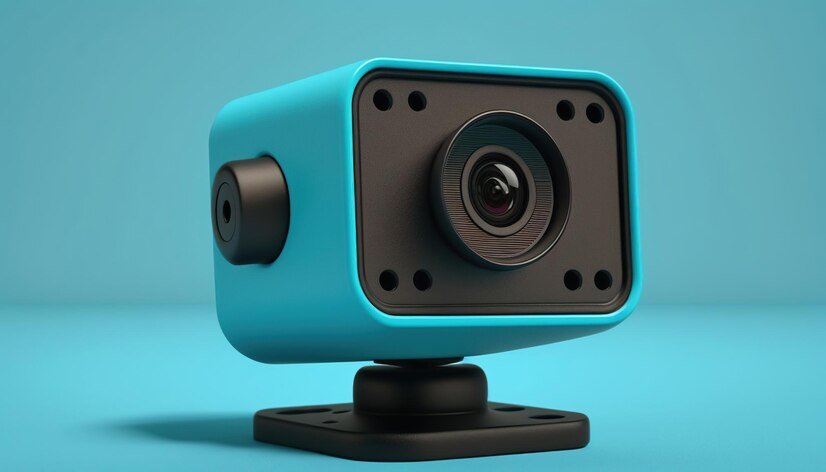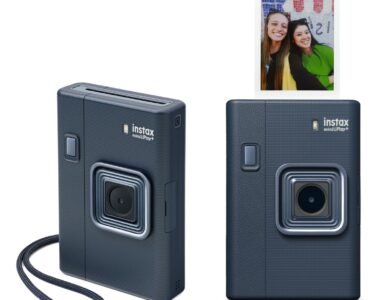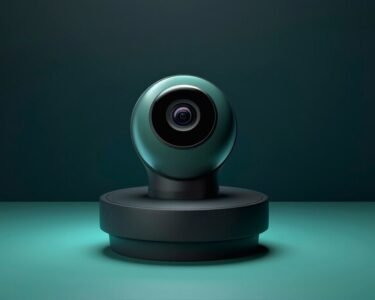The best 360-degree cameras offer unique capabilities for creating immersive content, capturing perspectives that smartphones simply cannot match. These cameras are particularly great for travel, action shots, and creative projects.
They combine two ultra-wide-angle lenses to cover every angle, creating seamless spherical photos and videos. When paired with accessories like selfie sticks, they can produce aerial-style shots without the need for a drone.
Top Pick: Insta360 X4
The Insta360 X4 is a standout in the 360-degree camera category. With features like 8K video resolution, a robust waterproof build, and a versatile 4K 60fps single-lens mode, it excels as a 360-degree camera, action camera, and vlogging device. Its rugged design makes it ideal for various scenarios, from adventurous outings to everyday documentation.
Other Notable Options:
- Insta360 X3: A more budget-friendly option, offering excellent quality and value, especially for those new to 360-degree photography.
- GoPro Max (with Max 2 Awaited): While the GoPro Max remains a strong contender, its much-anticipated successor, the Max 2, is expected to release in 2025 with potential upgrades.
Things to Consider:
- Resolution: Higher resolutions like 8K or 5.7K ensure more detailed captures.
- Portability: Compact designs are better suited for travel.
- Durability: Look for waterproof and rugged builds for outdoor activities.
- Versatility: Multi-function modes enhance usability across different scenarios.
For those keen on exploring their options, our detailed guide includes both the latest and older models, providing a range of choices to suit various budgets and needs. Make sure to check out our buying tips at the end of the guide for deeper insights into choosing the right 360-degree camera.
The best 360 degree cameras for 2024
Below is a detailed overview of the top 360-degree cameras, highlighting their features and performance based on extensive testing. Each recommendation has been carefully evaluated to ensure reliability, functionality, and overall value for a variety of use cases. Whether you’re seeking premium performance or budget-friendly options, these reviews will help you make an informed decision. Explore the full list to find the best fit for your photography or videography needs.
The Insta360 X4 is a stellar upgrade over its predecessor, the X3, offering a highly versatile and compact option for content creators. Its standout features include 8K 360-degree video recording and a robust 4K 60fps single-lens mode. Its waterproof design (up to 10m) and external mic compatibility, such as with the DJI Mic 2, make it an excellent choice for diverse shooting scenarios. Additionally, the improved in-camera microphones ensure decent audio quality right out of the box.
The X4 introduces significant upgrades, such as a larger 2.5-inch touchscreen for intuitive control and a 2290mAh battery that boosts usage time to 135 minutes. Enhanced features like screwable lens protectors, Active HDR for balanced exposures, and industry-leading FlowState stabilization paired with Horizon Lock further elevate its functionality.
With intuitive editing tools and creative modes like hyperlapse and bullet time, the X4 seamlessly bridges the gap between smartphone and action cameras. Whether for adventure, vlogging, or 360-degree storytelling, the Insta360 X4 is a top-tier pick for its versatility and innovation.
2. GoPro Max
If you’re capturing immersive footage of outdoor adventures or sporting activities, the GoPro Max serves as an excellent alternative to the Insta360 One X2. It boasts waterproofing up to five meters without a protective case, making it durable for diverse environments.
The user-friendly editing workflow stands out, particularly with its Over Capture feature, which allows you to convert 360-degree footage into traditional 2D videos in Full HD seamlessly.
The GoPro Max enhances popular features from the GoPro Hero series, such as Hyper Smooth stabilization for buttery-smooth footage and 360-degree Time Warp for dynamic time-lapse sequences.
While the 2D footage may appear slightly less sharp due to its conversion from fish-eye images, the Max is still a robust choice for those who want all-around action coverage without worrying about camera orientation during shoots.
It’s ideal for creating versatile and polished edits from every angle, perfect for action enthusiasts and content creators alike.
3. Kandao Qoo-Cam 3 Ultra
Kandao, though less prominent compared to Insta360, has made a strong mark with the QooCam 3 Ultra—a 360-degree camera boasting some of the finest image quality on the market.
This top-tier device features impressive 8K video recording capabilities and versatile slow-motion options. It also sets a high bar for photo resolution, capturing images at an unmatched 96MP.
Despite its excellent image quality and reliable waterproofing, the QooCam 3 Ultra has its drawbacks. It’s bulkier and heavier compared to competitors like the Insta360 X4, and its desktop software and app experience leave much to be desired, particularly with complex photo editing workflows. Additionally, the camera’s high price point makes it a less accessible option.
However, for those seeking an alternative to Insta360 with top-notch video and photo quality, the Kandao Qoo-Cam 3 Ultra is a compelling choice, even if it comes with a higher cost and a steeper learning curve.
Insta360 Evo: A Compact 360 and 3D Camera in One
The Insta360 Evo is a versatile and innovative dual-mode camera designed for those who want to shoot in 360 degrees or create immersive 3D content. With its foldable design, the Evo can easily switch between a 360-degree camera mode and a stereoscopic 180-degree 3D camera mode. This flexibility makes it an excellent choice for content creators exploring different formats.
The Evo supports 5.7K video resolution, ensuring high-quality output with impressive detail. It also features Insta360’s FlowState stabilization, which keeps footage smooth and shake-free even in dynamic conditions. The device is lightweight and portable, making it suitable for travel and on-the-go shooting.
Its main drawback is that the editing process can be slightly complex for beginners, especially when switching between 3D and 360 content. However, for those who prioritize versatility and high-quality output, the Insta360 Evo is a solid investment.
Insta360 X3: A Value-Packed Alternative
Though the Insta360 X4 has now taken the top spot as the best 360-degree camera, the Insta360 X3 remains an excellent choice for those seeking strong performance at a lower price point. It excels in capturing immersive 5.7K 360-degree footage and offers outstanding single-lens clarity with 4K resolution. While the X4 adds features like 8K recording and longer battery life, the X3 still provides a robust and versatile experience.
At launch, the X3 outperformed the GoPro Max in single-lens 4K sharpness and proved highly effective in 360-degree shooting. Its Active HDR mode stands out for retaining intricate details in highlights, though some processing effects may feel less organic than those from GoPro. The FlowState image stabilization remains one of its strongest features, delivering steady and smooth results during active use.
The X3’s large 2.29-inch touchscreen simplifies handheld operation, though some minor software quirks persist. Once familiar with the interface, users will find it intuitive and efficient. Insta360’s editing tools complement the camera’s capabilities, enabling quick and creative edits with ease.
With realistic battery life of up to 81 minutes, water resistance up to 10 meters—double that of the GoPro Max—and competitive pricing, the Insta360 X3 is an excellent alternative to its successor, particularly for budget-conscious buyers who don’t need cutting-edge specs.
Choosing the Best 360 Camera for Virtual Tours
360-degree cameras are ideal for creating virtual tours, allowing users to explore spaces like real estate listings, museums, or hotels in an immersive way. Here’s how to select the best one based on your needs:
For Video Tours
If your virtual tour involves walking through a location while recording, smooth and high-quality 360-degree footage is essential. Cameras like the Insta360 X4 and Kandao QooCam 8K Ultra stand out:
- Insta360 X4: Captures stunning 8K video with advanced stabilization (SuperSteady), ensuring smooth footage. Its compact design makes it easy to navigate through spaces.
- Kandao QooCam 8K Ultra: Offers detailed 8K video with rich colors, making it a strong contender for high-quality virtual tours. However, note that 8K videos can result in large file sizes that might need compression for hosting platforms.
For Photo Tours
Most virtual tours rely on high-resolution stills taken with a tripod-mounted camera to ensure stability and sharpness:
- Insta360 X4: A top-tier option for stills, capturing detailed 360-degree photos at an impressive 72MP resolution. Its built-in tripod mount ensures easy setup.
- Insta360 X3: A more affordable choice, capable of capturing 18MP 360-degree stills. It’s perfect for budget-conscious creators who still want high-quality images for virtual tours.
Hosting and Platforms
After capturing your footage, upload your images or videos to hosting platforms like Facebook or CloudPano. These platforms allow users to explore your 360-degree content interactively.
Both the Insta360 X4 and X3 feature intuitive editing tools, making it easy to create and refine content before sharing your virtual tours online.






